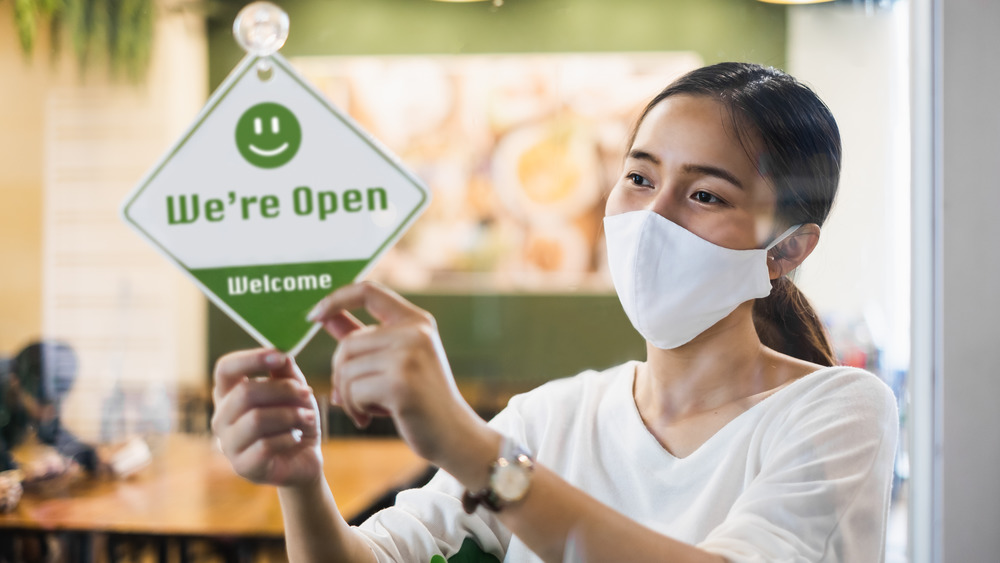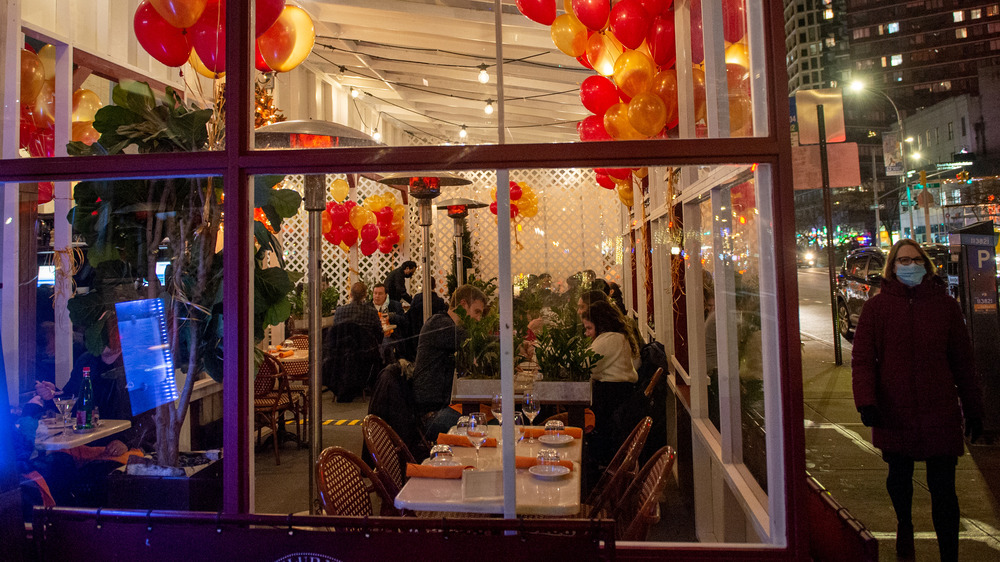How Yelp Is Trying To Make Dining Out Safer During COVID
On January 12, Yelp announced that it will begin displaying information on whether businesses enforce COVID safety regulations. "As the pandemic continues to change our daily lives," Akhil Kuduvalli Ramesh, Yelp's Head of Consumer Product, explained in a company blogpost, "we are relentlessly focused on addressing the needs of both local businesses and consumers by providing helpful and up-to-date information during these uncertain times."
Information about health and safety compliance will now be displayed under a "Health and Safety Measures" section of a restaurant's Yelp page. While this information will be user-generated, Yelp won't flag a business after just one bad review. Instead, Yelp will require a consensus among several reviewers that the business has failed safety protocols and will only allow logged-in users to make these claims. Additionally, Yelp will only evaluate customer responses within the last 28 days in case the business updates their policy, and in cases of a brand owning multiple stores, they will treat each outlet individually. This way, Yelp hopes to balance holding businesses responsible and having sufficient evidence of health and safety risks beyond a single irate user. Businesses can also take the initiative by indicating on their Yelp profile that they offer pandemic-appropriate services like private dining, DIY meal kits, and heated outdoor seating.
This comes six months after Yelp initially included the opportunity for businesses to describe which measures they were taking. On the list they shared in June 2020, they included many health measures we have grown accustomed to, like the enforcement of social distancing.
The hot spot of the pandemic
The major reason why Yelp's additions are important is that restaurants could potentially be a source of COVID-19 transmission. As reported by CNN, one study by the CDC discovered that adult COVID-19 patients were twice as likely to have patronized a restaurant in the last 14 days before becoming sick. While the study was limited, researchers explained, "Masks cannot be effectively worn while eating and drinking, whereas shopping and numerous other indoor activities do not preclude mask use."
The research noticed no other differences between the group that tested positive for COVID-19 and the group that tested negative other than the former visited a restaurant in the two weeks previous. Both groups went shopping, visited others inside a home, and used public transportation. All of these other activities can be carried out with facial covering, while eating and drinking require the mouth to be bared.
CNN explains that some types of eating environments are lower risk for diners. Drive-thrus, pick-ups, and deliveries present the lowest amount of risk to people who would like to treat themselves. Meanwhile, limited outdoor dining with social distancing between tables makes the situation riskier, and indoor dining without distancing between tables proves the riskiest of all. So, having a site, like Yelp, keep track of which businesses follow rules that place their customers at less risk becomes vitally important. So, check your local establishments, inform each other of their standing, and be safe.

